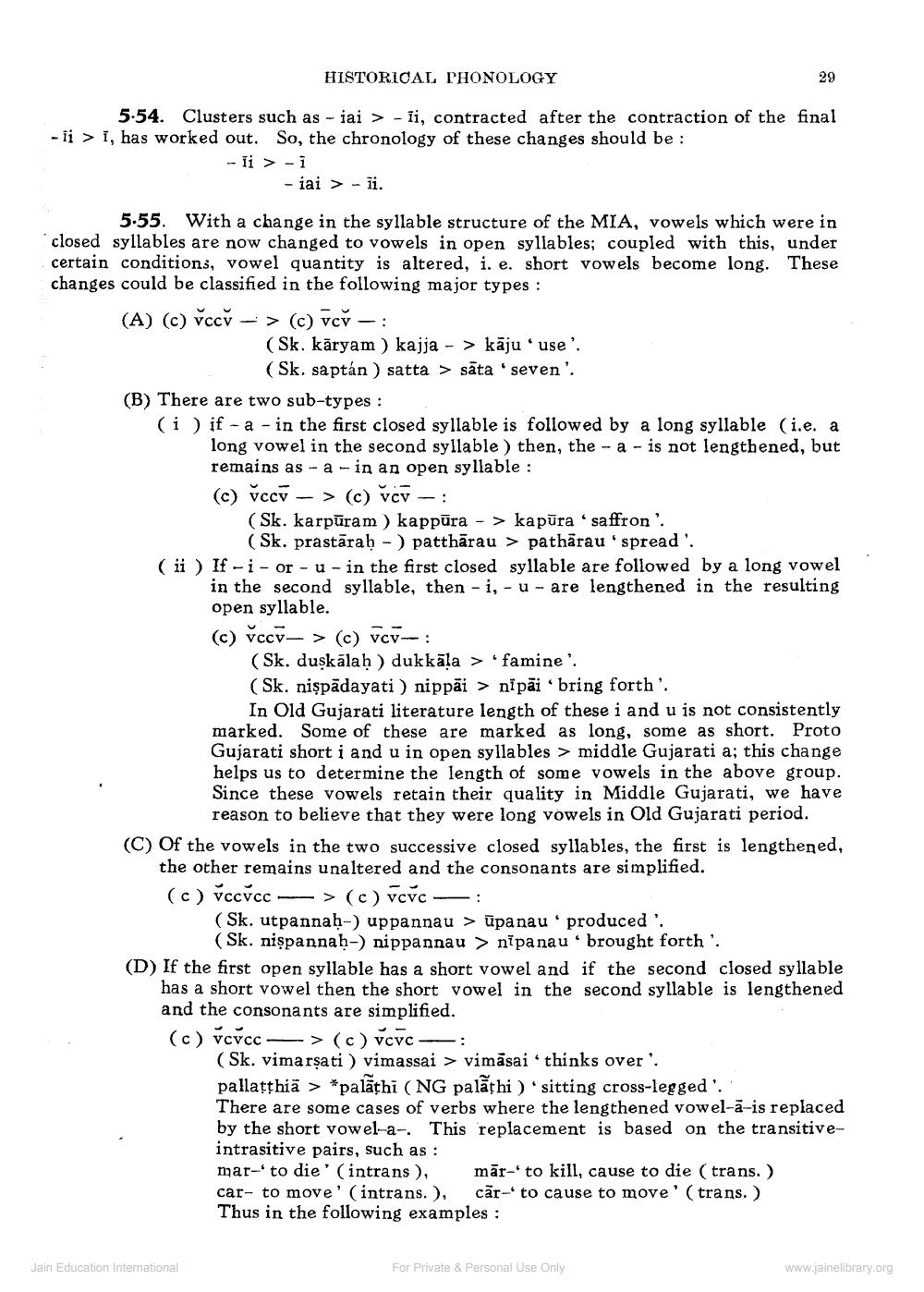________________
HISTORICAL PHONOLOGY
29
5.54. Clusters such as - iai > - ii, contracted after the contraction of the final - ii > i, has worked out. So, the chronology of these changes should be :
- ii > -i
-iai > - ii.
5.55. With a change in the syllable structure of the MIA, vowels which were in closed syllables are now changed to vowels in open syllables; coupled with this, under certain conditions, vowel quantity is altered, i. e. short vowels become long. These changes could be classified in the following major types : (A) (c) vccỹ --> (c) vcř - :
(Sk. kāryam ) kajja - > kāju 'use'.
(Sk. saptán ) satta > sāta 'seven'. (B) There are two sub-types : (i ) if - a - in the first closed syllable is followed by a long syllable (i.e. a
long vowel in the second syllable) then, the-a - is not lengthened, but remains as-a-in an open syllable : (c) vccy - > (c) vcv - :
(Sk. karpūram ) kappūra - > kapūra "saffron'.
(Sk. prastāraḥ - ) patthārau > pathārau 'spread'. (ii) If - i - or - u-in the first closed syllable are followed by a long vowel
in the second syllable, then -i, -u - are lengthened in the resulting open syllable. (c) Ďccv— > (c) vcv-:
(Sk. duşkālah ) dukkāla > famine'. (Sk. nişpadayati) nippai > nipāi bring forth'.
In Old Gujarati literature length of these i and u is not consistently marked. Some of these are marked as long, some as short. Proto Gujarati short i and u in open syllables > middle Gujarati a; this change helps us to determine the length of some vowels in the above group. Since these vowels retain their quality in Middle Gujarati, we have
reason to believe that they were long vowels in Old Gujarati period. (C) Of the vowels in the two successive closed syllables, the first is lengthened,
the other remains unaltered and the consonants are simplified. (c)ýccýcc - > (c) vcực — :
(Sk. utpannah-) uppannau > ūpanau produced':
(Sk. nişpannah-) nippannau > nipanau brought forth'. (D) If the first open syllable has a short vowel and if the second closed syllable
has a short vowel then the short vowel in the second syllable is lengthened and the consonants are simplified. (c) vcvcc — > (c) vcvc_ :
(Sk. vimarsati ) vimassai > vimāsai thinks over '. pallaţthia > *palāthi (NG palățhi ) .sitting cross-legged'. There are some cases of verbs where the lengthened vowel-ā-is replaced by the short vowel-a-. This replacement is based on the transitiveintrasitive pairs, such as: mar-'to die' (intrans ), mār-' to kill, cause to die (trans. ) car- to move' (intrans.), car-' to cause to move' (trans.) Thus in the following examples :
Jain Education International
For Private & Personal Use Only
www.jainelibrary.org




